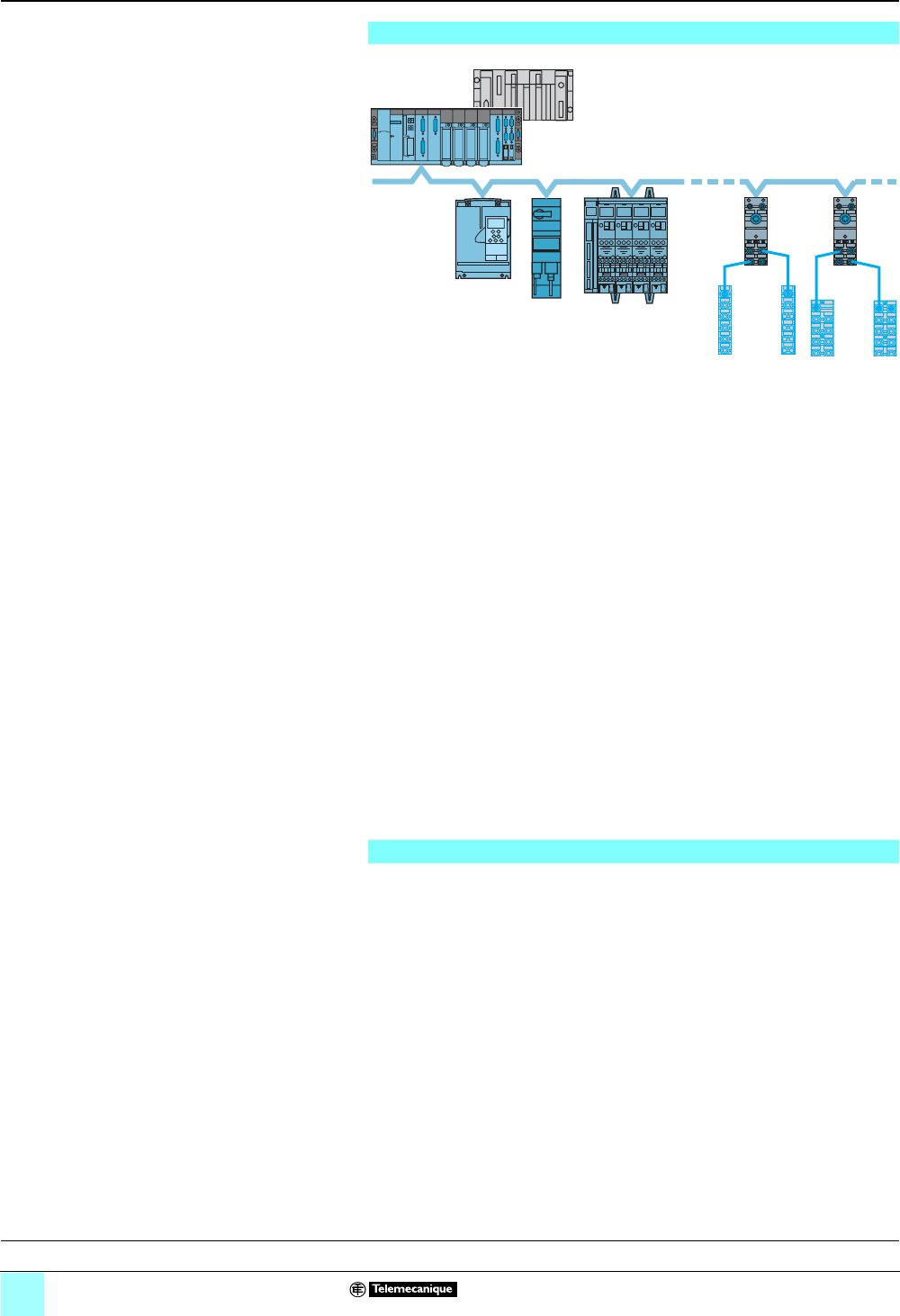
40
Presentation (continued),
configuration
0
IP 67 modular I/O splitter boxes
for fieldbuses 0
Advantys™
Distributed I/O, FTM splitter boxes
CANopen bus presentation
The CAN system, initially developed for real-time exchange of information in the
automobile industry, is now being used more and more throughout industry. There
are several fieldbuses based on CAN base layers and components.
The CANopen bus conforms to international standard ISO 11898, promoted by the
“CAN in Automation” association (a grouping of manufacturers and users), and
guarantees a high degree of openness and inter-operability due to its communication
profiles and its standardized equipment.
The CANopen bus is now recognized, in Europe, as the reference standard for
building industrial systems based on the CAN concept.
The CANopen bus is a Multimaster bus, based on the Master/Slave principle.
The physical link consists of a shielded twisted pair, to which up to a maximum of
127 Slaves can be connected by simple tap-off. The binary rate varies, depending
on the length of the bus, from 1 Mbits/s for 40 m (131.2 ft.) to 50 kbits/s for 1000 m
3281 ft.).
Each end of the bus must be fitted with a line terminator.
The CANopen bus is a set of profiles on CAN systems, possessing the following
characteristics:
b Open bus system.
b Data exchanges in real-time without overloading the protocol.
b Modular design allowing modification of size.
b Interconnection and interchangeability of devices.
b Standardized configuration of networks.
b Access to all device parameters.
b Synchronization and circulation of data from cyclic and/or event-controlled
processes (short system response time).
b Exchanges possible with numerous international manufacturers.
CANopen bus configuration
An .eds file is assigned to each product, which contains all the important information
relating to the product. An icon (.dib) is also available for installation in the system
configurator.
Please refer to the configuration software documentation for the import of .eds files.
Following the CANopen system initialization phase, all the Slaves signal their
presence on the bus by means of a “Boot-Up” message. A setting-up configurator
(e.g.: SyCon. Refer to our Modicon
®
Premium
™
PLC automation platform catalog)
can then start to read and register the CANopen bus and, on the basis of the data
obtained, assign a corresponding .eds file to each Slave. Based on the .eds file data,
the Master creates a peripheral image of all the Slaves detected by the PLC. The
user can assign I/O bytes to logic addresses within the PLC.
b Addressing
The addresses are configurable from 1 to 99 by means of 2 coding wheels (x 10 and
x 1). A 3rd coding wheel enables the data transmission speed to be selected
(position 0 = automatic speed recognition).
Altivar
®
58 Drive
FTM 1CN
FTM 1CN
Modicon®
Premium™ PLC
Tego® Power
Connection
From 1 to 127 Slaves
Other Master
CANopen bus
TeSys
®
Model U
Description:
page 43
Connections:
pages 44, 45
Characteristics:
pages 46, 47
References:
pages 48, 49
Dimensions, schemes:
pages 50, 51
Courtesy of Steven Engineering, Inc. ● 230 Ryan Way, South San Francisco, CA 94080-6370 ● General Inquiries: (800) 670-4183 ● www.stevenengineering.com


















